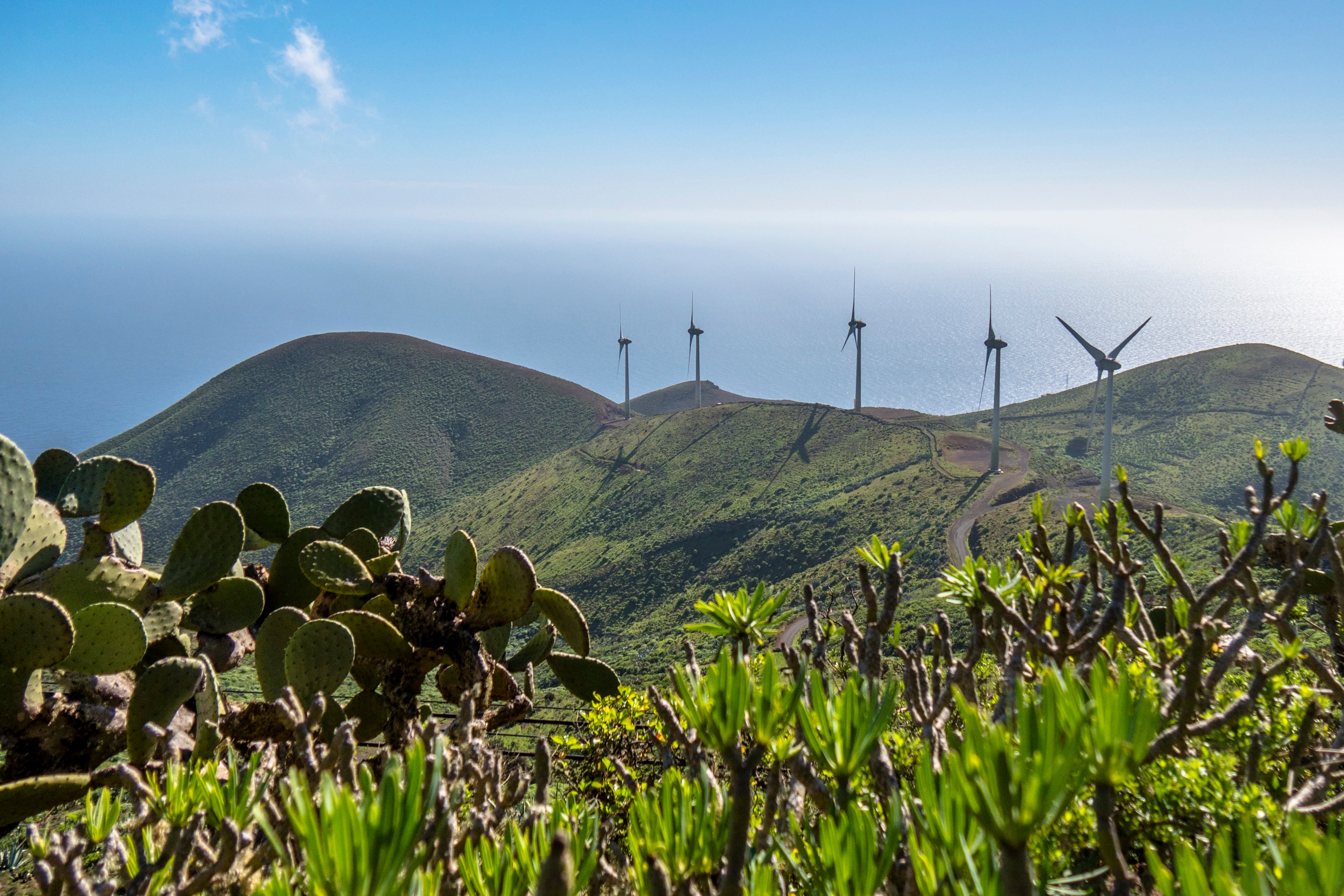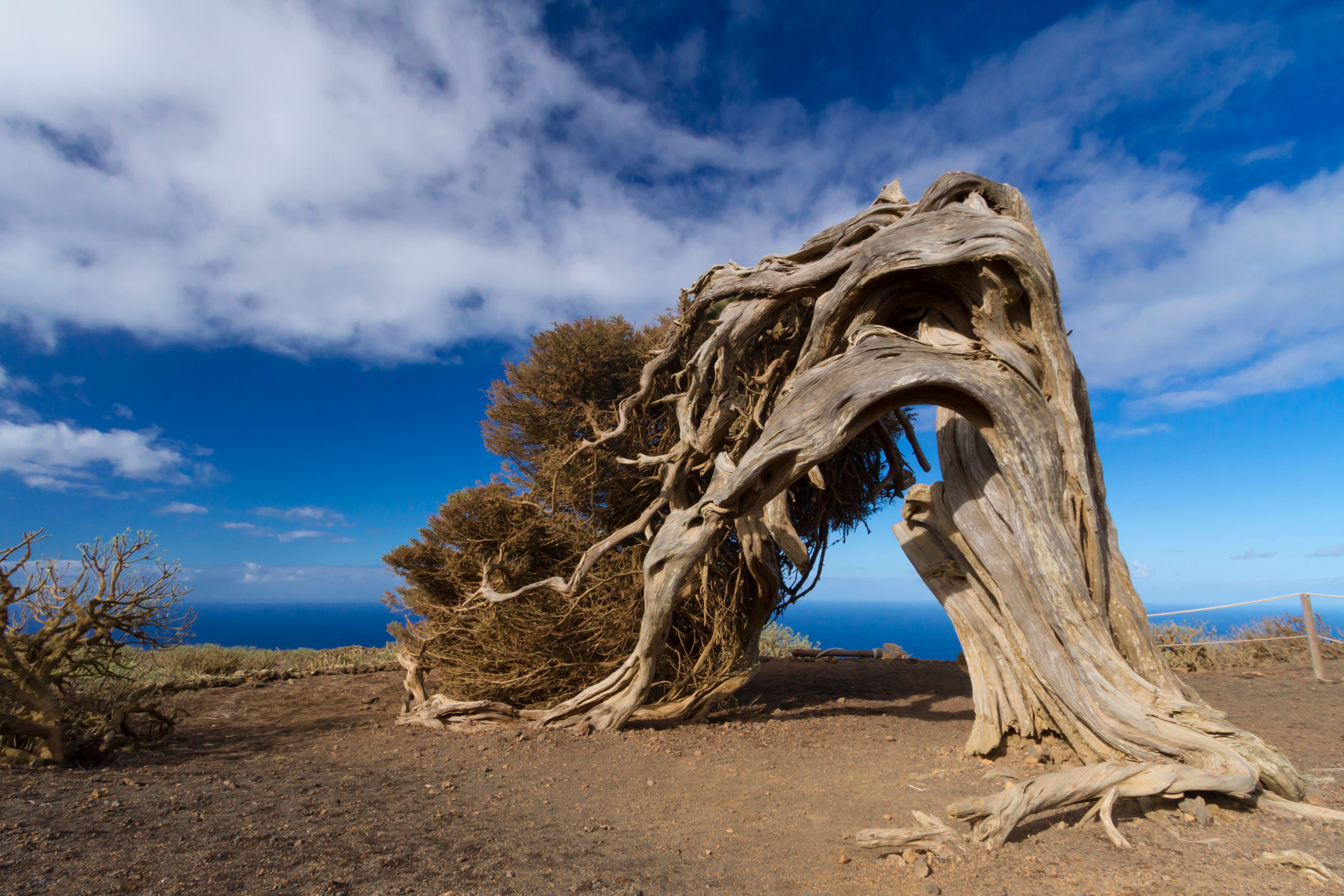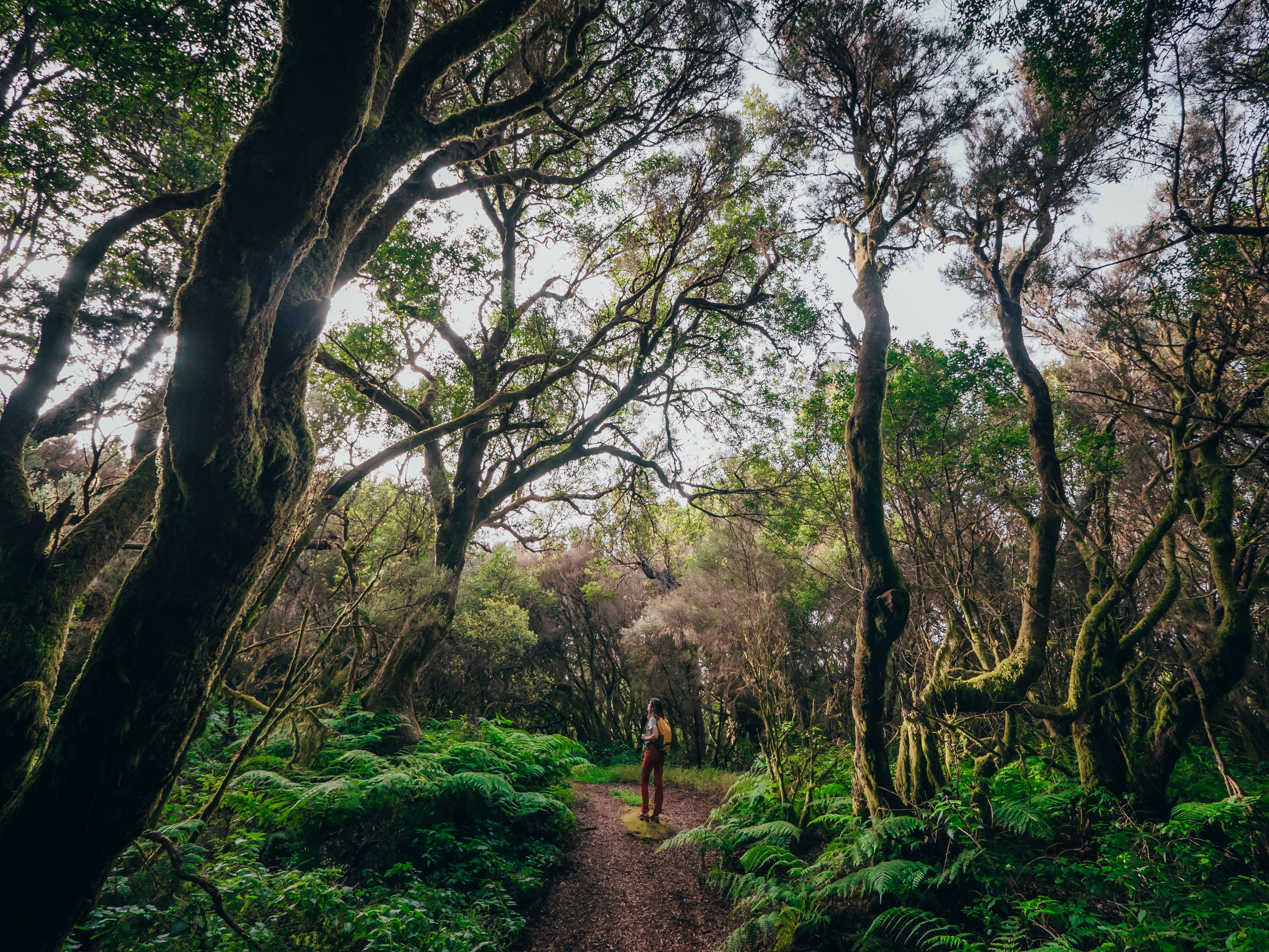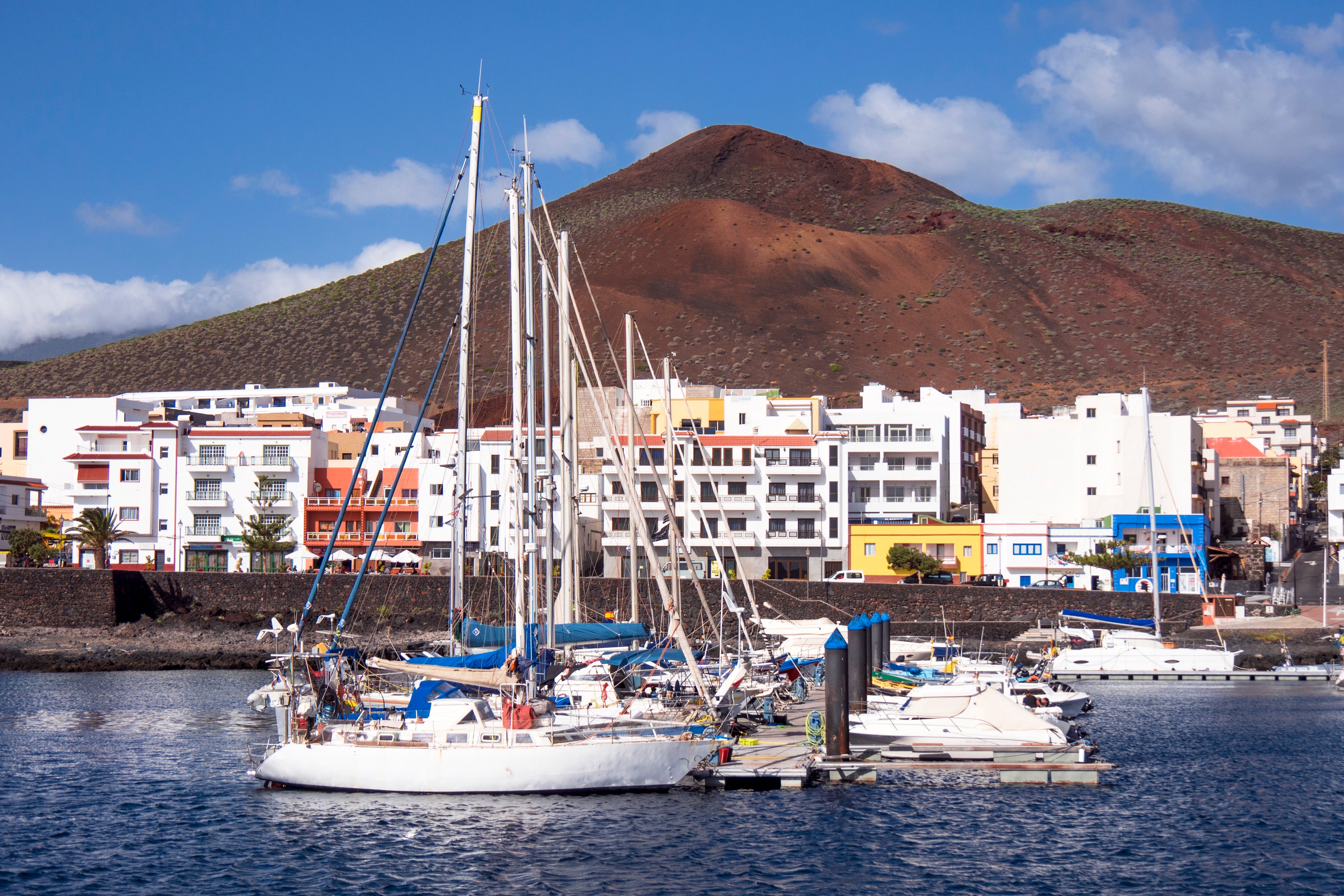The Independent's journalism is supported by our readers. When you purchase through links on our site, we may earn commission.
El Hierro – the little-known Canary island powered by renewable energy
The Canary Islands’ otherworldly volcanic landscapes are the stuff of legend – to see them in their purest form, head to their sustainable, off-radar sibling, says Shilpa Ganatra

Your support helps us to tell the story
From reproductive rights to climate change to Big Tech, The Independent is on the ground when the story is developing. Whether it's investigating the financials of Elon Musk's pro-Trump PAC or producing our latest documentary, 'The A Word', which shines a light on the American women fighting for reproductive rights, we know how important it is to parse out the facts from the messaging.
At such a critical moment in US history, we need reporters on the ground. Your donation allows us to keep sending journalists to speak to both sides of the story.
The Independent is trusted by Americans across the entire political spectrum. And unlike many other quality news outlets, we choose not to lock Americans out of our reporting and analysis with paywalls. We believe quality journalism should be available to everyone, paid for by those who can afford it.
Your support makes all the difference.In the arid southwest of El Hierro, against a backdrop of inhospitable mountain plains scorched yellow by the blazing sun above, lies El Sabinar. Bent uncomfortably, with its twisted branches windswept to one side, it’s the gnarliest of juniper trees – 1,000 years old and not looking a minute younger.
It stands alone because when the juniper trees that covered this area were cut for their wood, only those contorted out of shape by the winds were spared the axe. Now it serves as an eerie mark of man’s short-term gains for nature’s long-term losses. Thankfully, El Hierro – the second smallest of the Canary islands – has learned from the past.
Now a Unesco biosphere reserve, the whole island is protected – it’s an offence to fell a juniper tree. Driving along El Hierro’s winding roads, it’s rare to come across a man-made construction within its dramatic landscapes, which blur from black volcanic rubble into lunar wilderness, via sheer cliffs and lush forests.

But the island’s commitment to conservation goes beyond nature. Uncharacteristically for the Canary Islands, it has stayed uninterested in attracting mass tourism. An example: only El Hierrians are permitted to run accommodation, so the trickle of visitors who do make it here stay in family-run houses or one of two major hotels – one is state-run, the other is part of the Parador chain (the exception to the rule).
El Hierro has learnt when it comes to natural resources, too. As we hike around the area, my guide Rubén recalls his grandmother telling him stories about the drought that hit the island in 1948.
“The ships that delivered water to the Canary Islands missed El Hierro simply because it was too small and too far away,” he says. “After that, we wanted to make sure that we were self-sufficient, that we had the means to survive with what we had on the island, without needing to rely on outside help.”
That’s a key reason why it’s aiming to become the first island to run on renewable energy created entirely on its own shores – a goal it’s well on its way to reaching, as I found during our next stop, the power plant of Gorona del Viento.

Wind farms aren’t usually in my top five tourist attractions on a Med island, but there’s much to be proud of in this project, which began in 2014. After a peek at the control room, on-site guide Cristina Morales takes us to Gorona del Viento’s lower water reservoir. Here, she explains, is where the genius of this type of power plant comes in.
“When the turbines are producing more energy than we need, rather than store it inefficiently or let it go to waste, we use it to push water up to a higher reservoir. Then, when wind-energy production drops, we release that water back down and harness the hydroelectric energy from it,” she says.
Overall, the Canary Islands meet 17.5 per cent of their energy needs with renewables. But El Hierro exceeds that by far: on some days Gorona del Viento’s production is enough to meet the modest needs of all 11,000 inhabitants, plus a small amount of visitors. (It welcomes only 9,000 tourists a year, 0.2 per cent of Tenerife’s annual haul.) The longest it’s powered up the whole island is 25 consecutive days, before the back-up diesel engine had to step in.
Profits from this enterprise are channelled into subsidies for such things as more efficient water distribution systems (these alone use up 40 per cent of the island’s energy), solar power panels and educational programmes on how to be more energy efficient. This is how, in time, the island aims to be fully run on renewables, year-round.

The eco-conscious message hasn’t holistically reached every inhabitant. My hotel, Balneario Pozo la Salud, for example, is rife with single-use plastics – from the toiletries in the bathroom to the individually packaged cakes for breakfast. But step outside to the sea-front terrace, with its mesmerising views of the Med on one side and a colossal volcanic slope on the other inland side, and some – if not all – is forgiven.
Truly, El Hierro’s untouched nature and other-worldly landscape are the main appeals. Tourists to Tenerife or Gran Canaria thrill at their lunar looks, even interrupted by hotels and property developments, but those who make the effort to prise themselves away from the big hitters and move on to El Hierro are rewarded with an island practically to themselves. It’s paradise for hiking, mountain biking, diving, paragliding and swimming in natural pools.
Even I, with my comical sense of direction, can follow the clear but subtle markers left for hikers within the island’s trails of wilderness and woodlands. On these same routes, mountain bikers are given a hefty challenge with veering inclines that offer El Hierro’s full wealth of vistas in a one-day ride.

This is also known as one of the world’s best islands for underwater exploring, with 40 dive spots of crystal-clear water and an abundance of sub-tropical and Atlantic marine life. In the fishing village of La Restinga, in the sunny south of the island, I meet fellow tourist Hullinger and his girlfriend coming inland from the port. Their fresh faces, unshakeable grins and matted, dripping hair confirm they’ve just been on a successful diving expedition.
Being from Switzerland, the two are used to diving in freshwater lakes, where seeing one fish is an event. “But here there were hammerhead sharks and so many schools of different fish. We even saw an octopus, which was a big goal for us,” he thrills.
There was a time, before Columbus discovered America, that El Hierro was seen as the western end of the world. Now we know it to be a 40-minute flight from Tenerife, but still – what remote, unspoiled wonders await for those who make the journey.
Travel essentials
Getting there
El Hierro is a two-and-a-half-hour ferry ride from Tenerife with Naviera Armas Ferries, a 45-minute flight from Tenerife, or a 55-minute flight from Gran Canaria.
Staying there
The main hotel is Parador de El Hierro, which is isolated on the east coast with few facilities within walking distance. Stay instead in the southernmost town of La Restinga for better weather plus a choice of restaurants and activities, or Frontera for easy travel around El Hierro.
More information
For more information on El Hierro, see hellocanaryislands.com, and to visit Gorona del Viento see goronadelviento.es.
Shilpa was a guest of the Spanish Tourist Office.
Join our commenting forum
Join thought-provoking conversations, follow other Independent readers and see their replies
Comments